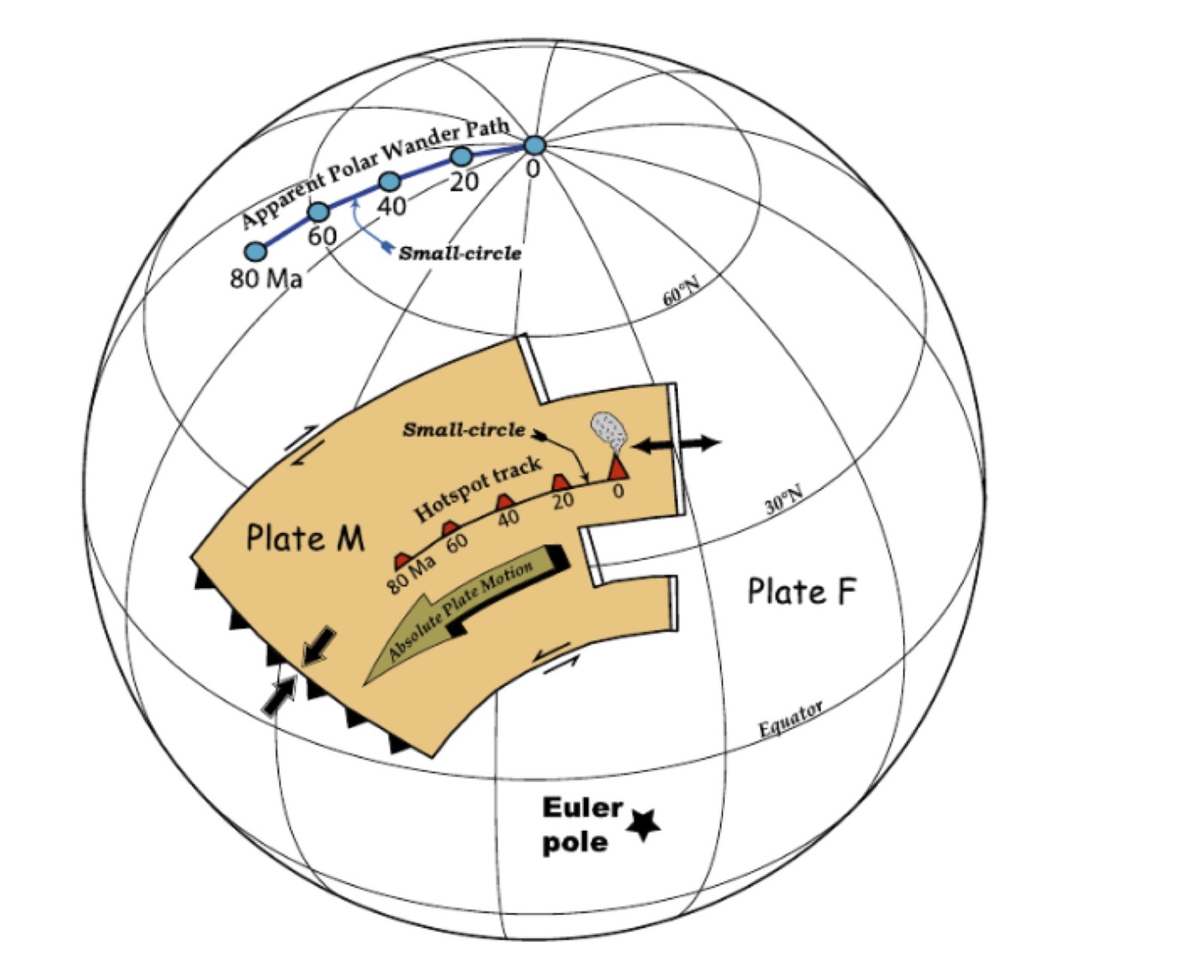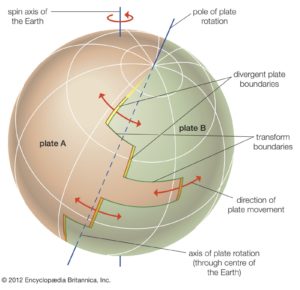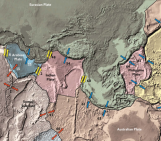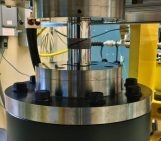
The paper describes how large, rigid, aseismic regions can be defined with Euler’s theorem, which describes the geometry of motion on a sphere, i.e. the Earth’s surface. Points on these large and rigid blocks move in relation to other blocks describing small circles set by their rotation pole. The paper describes this as “paving stone theory”, where tectonic plates are “paving stones”, and successfully demonstrates the validity of the theory, which we now call plate tectonics, for the North Pacific Ocean.

Apparent polar wander paths (in the absence of true polar wander) and hot spot tracks (if fixed to the mantle) represent small circle segments if the Euler pole is kept at the same location. In this example, Plate F is held fixed, and Plate M is moving around a constant Euler pole for 80 Ma. Compare text and Gordon et al. [1984].

Another illustration of plate motion. Download from: https://www.britannica.com/science/plate-tectonics/Transform-faults
In a talk at AGU Spring 1967, Jason Morgan entirely changed the topic of his abstract in favor of the description of an approach similar to that in McKenzie’s paper but with magnetic anomalies, not earthquakes. McKenzie read the original abstract but missed the talk, and later that year published the article. This led to a small controversy and is a clear sign that these ideas were settling among Earth scientists. A still larger controversy arose at the time of publication, as many colleagues failed to acknowledge a new theory that questioned their research. Nowadays, the main discrepant points for the theory of plate tectonics perhaps lies in the rigidity of plates and the localization of plate boundaries, or lack thereof, questions that can be seen to a certain extent as a matter of scale.
Commonly considered to be ‘the first article’ of plate tectonics, McKenzie and Parker 1967’s paper was regarded as a paradigm shift in Earth Sciences. Antecedent theories, like those of the shrinking or expanding Earth and that of geosynclines, were eventually put aside in favor of the new views laid by this article, a handful of contributions before, and many, many contributions after, which accounted for, and fitted, observations at a global scale.
Utsav Mannu, Pan Luo, and David Fernández-Blanco participated in the discussion. Utsav Mannu mentioned that the thought analysis and data presented in this paper makes it more like a long discussion, something that we see often in other disciplines (such as particle physics), but not so much in Earth Sciences. For this point, David and Pan explain that the most important contribution in McKenzie (1967)’s paper is to put all pieces together, which looks like building the first order architecture of a house, not to give detailed interpretations. McKenzie’s work in this paper is in this sense more similar to Diezt’s work on “seafloor spreading theory” (Dietz, 1961).
Written by David Fernández-Blanco, Pan Luo, Utsav Mannu and the TS Must-Read Team
References
Dietz, R., (1961). Continent and Ocean Basin Evolution by Spreading of the Sea Floor. Nature 190, 854–857 https://doi.org/10.1038/190854a0





Xin Xianwu
Both plate theory and continental drift theory have dynamic problems.
After solving the dynamic problem. The continental drift theory with ITRF measurement results are in better agreement.
Xin Xianwu
From a local perspective, it seems that the crust can be simplified to rotate according to Euler poles. Actually the continents was not drifting disorderly, but drifting westward with New Zealand as the datum. And also moves along the meridian direction.